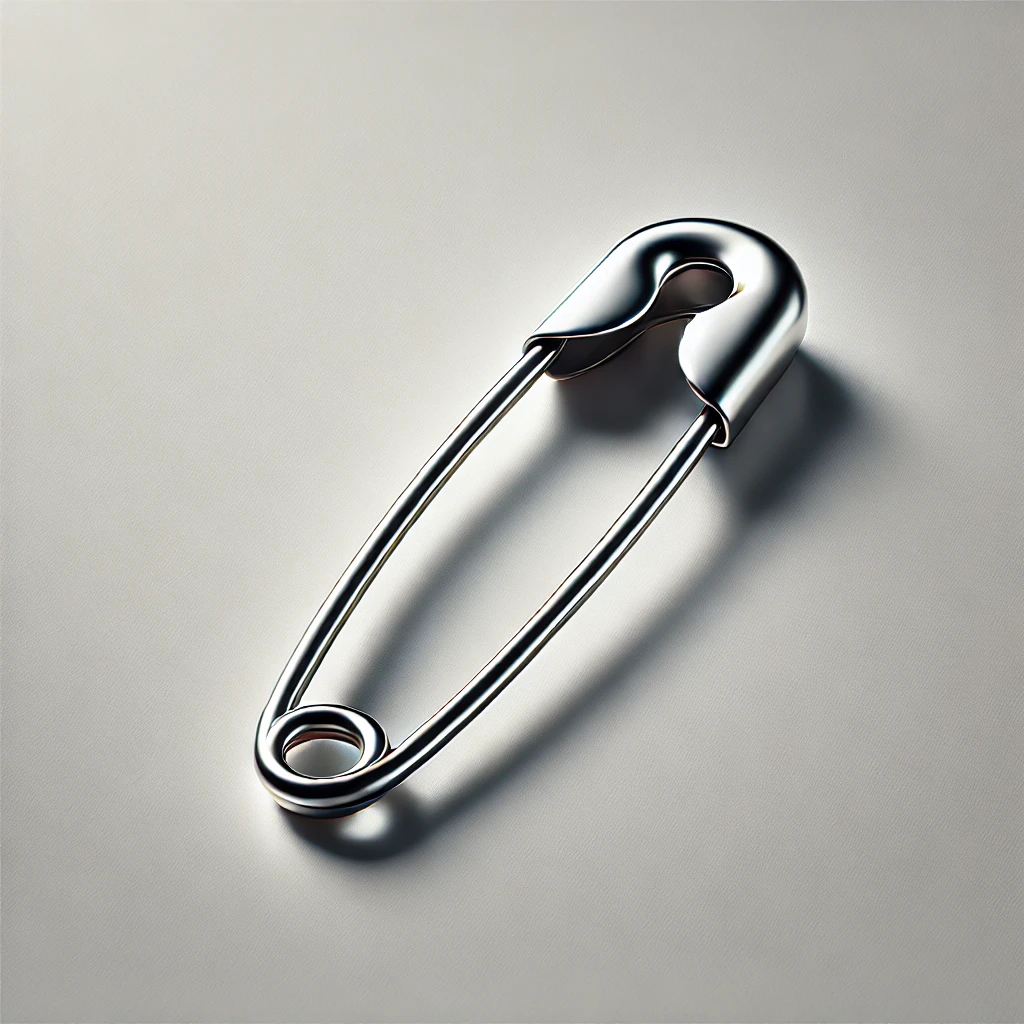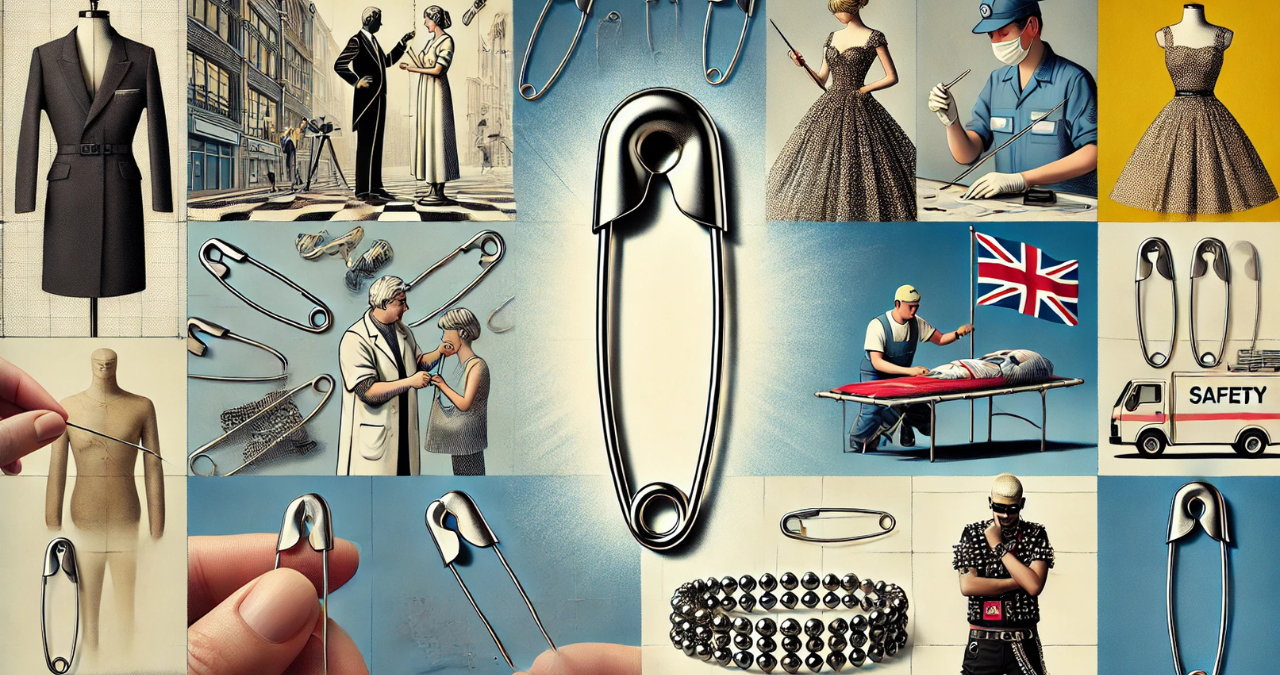Introduction
The humble safety pin is small and simple, yet its utility is unmatched in household and professional settings. This tiny device was invented in 1849 by Walter Hunt, who revolutionized the way we fasten materials together. The safety pin design—a coiled pin with a clasp that covers the point—provides a secure way to hold fabrics or other items together without causing damage or injury. Its invention made life more convenient and sparked countless innovations in fashion, first aid, and even arts and crafts. Today, the safety pin remains indispensable in many aspects of life, proving that good things come in small packages.
The Design and Evolution of the Safety Pin
The traditional safety pin consists of a spring mechanism and a clasp made primarily from durable metal. This design ensures the point is shielded once the pin is closed, preventing accidents. Over the decades, the design of safety pins has seen various enhancements, including rust-resistant coatings and multiple sizes to suit different uses. From tiny pins for delicate silks to large, robust pins for upholstery, the evolution of the safety pin reflects its versatility and enduring necessity.
Originally invented as a solution for a debtor seeking to pay off his debts, Walter Hunt created the safety pin and sold the patent for just $400. Little did he know, his invention would become a staple in every household and professional seamstress’s kit. Over the years, safety pins have been made from various materials, including plastic, for lightweight or temporary uses, and decorative elements have been added for aesthetic purposes in the fashion industry.
Safety Pin Uses in Fashion
In fashion, safety pins are tools for emergency repairs, elements of style, and statements of rebellion. Punk fashion famously adopted the safety pin as an anti-establishment expression, using it to fasten patches, secure ripped fabrics, and even makeshift jewelry. However, the utility of safety pins in fashion extends beyond punk culture. They are crucial for fitting sessions in couture, where making quick adjustments to garments without damaging the fabric is paramount.
Moreover, safety pins are lifesavers during fashion emergencies such as loose hems, broken zippers, or missing buttons. Their discreet nature allows temporary fixes to save the day at events or important meetings. Additionally, creative designers have turned safety pins into decorative accessories, creating brooches, earrings, and other jewelry items that highlight the pin’s metallic aesthetic against luxurious fabrics.
Safety Pins in First Aid and Emergency Situations

Safety pins are essential for any first aid kit, not just for their ability to fasten bandages or slings but also for their versatility in emergencies. In first aid, safety pins can secure bandages around wounds, create makeshift arm slings, or hold cold packs in place. The safety pin’s reliable locking mechanism ensures that it will not quickly come undone once in place, making it ideal for temporary medical fixes.
When packing an emergency kit, it can be wise to include various sizes of safety pins, as their uses can extend beyond medical needs to repairing torn tents or securing loose gear. However, it is essential to ensure that safety pins used in first aid are sterile to avoid infection. Keeping them in sealed packs and only using them when necessary helps maintain their sterility.
Conclusion
From its inception to the present, the safety pin has proven itself to be more than just a simple fastening tool. Its design has stood the test of time, providing solutions in fashion and emergency repairs and innovative applications in crafts and daily conveniences. The safety pin exemplifies how a small, ingeniously simple design can have a massive impact on everyday life.
FAQs
What is the safest way to use a safety pin?
Always ensure the safety pin is closed correctly and the point is secured within the guard before using. Check for rust or damage before use to avoid injuries or fabric damage.
Can safety pins be recycled?
Metal safety pins can be recycled with metals. Dispose of them thoughtfully to avoid injury at recycling facilities.
Are there any alternatives to safety pins?
For temporary fixes, adhesive fabric tape or magnetic buttons can offer options. However, the safety pin’s unique mechanical design is irreplaceable for many uses.
How do you unstick a safety pin?
If a safety pin is stuck, apply a small amount of lubricant like WD-40, wipe clean, and gently try to open it. Be cautious to avoid pricking yourself.
What are the best practices for using safety pins in clothing?
To avoid damage, choose a pin size appropriate for the fabric thickness. Always insert the pin discreetly through layers to maintain aesthetics and ensure it’s hidden.
You May Also Read: https://ventsbuzz.pro/
